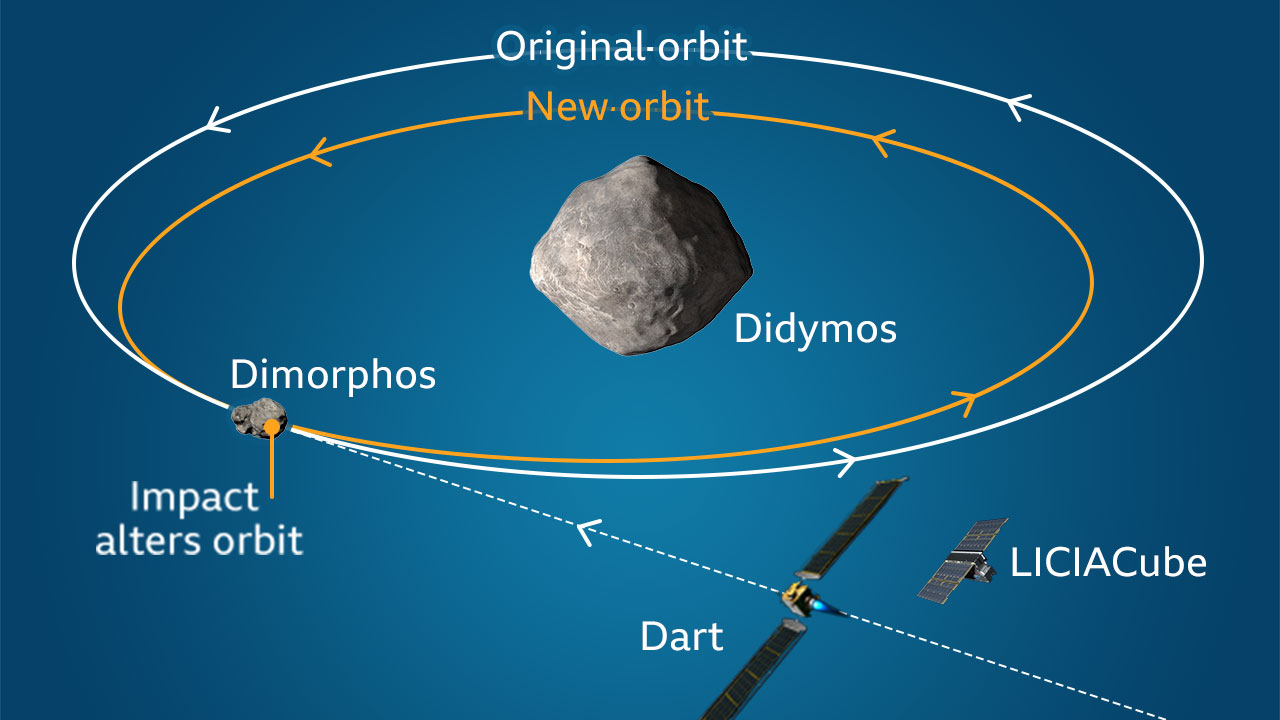Assistant professor in aerospace happy to play role in DART's smashing success
Published: Mar 13, 2023 8:00 AM
By Joe McAdory
NASA crashed a 1,345-pound spacecraft into the moon of a tiny asteroid last fall with intention of changing its orbit by several minutes. Why? Such measures could be necessary for planetary defense in the future.
The result: A smashing success, literally.
Masatoshi Hirabayashi, assistant professor in aerospace engineering and part of a NASA-supported scientific team led by the Johns Hopkins University Applied Physics Laboratory (APL), co-authored three papers detailing results of the first Double Asteroid Redirection Test (DART). The spacecraft, launched from California in the fall of 2021, collided with Dimorphos, moon of Didymos, on the afternoon of Sept. 26, 2022, and scientists spent the past five months analyzing its impact.

“I am very excited to see new publications from the mission, one of which shows a change in orbital condition before and after the impact by 33 minutes,” said Hirabayashi, who stressed that the Didymos system poses no threat to earth. “This is a thrilling and important result because DART’s impact was originally expected to have a smaller change. It is very promising that kinetic deflection capability can be very efficient in terms of planetary defense.”
Hirabayashi, director of Auburn’s Space Technology Application Research Lab, analyzed Dimorphos’ pre- and post-impact dynamical behaviors and materials ejected from the impact site (ejecta), quantifying the effect of kinetic deflection. As part of his DART collaborations with the APL and other institutions, Hirabayashi was the second author on the paper, “Ejecta from the DART-produced active asteroid Dimorphos,” discussing detailed observations of DART-impact driven ejecta by the Hubble Space Telescope (HST) and published March 1 by the impactful journal Nature.
HST observations revealed a complex evolution of ejecta after the DART impact. Ejected materials departed from the target asteroid, Dimorphos, in various ways due to asteroids’ gravity and non-gravitational effects such as solar radiation pressure, in which sunlight blows particles away towards the antisolar direction.
Hirabayashi said ejecta were the key contributors to enhancing kinetic deflection. Such findings provide a framework for understanding the fundamental mechanisms acting on collisions on asteroids, which enables us to quantify how to design and use kinetic impactors as a tool of asteroid deflection.
He also co-authored DART-study papers published in Nature, “Successful Kinetic Impact into an Asteroid for Planetary Defense,” which detailed the DART impact on Dimorphos and addresses such a technique is viable for planetary defense, and “Momentum Transfer from the DART Mission Kinetic Impact on Asteroid Dimorphos,” which quantified the kinetic deflection capability of the DART impact on Dimorphos by determining the orbital speed change as a result of the collision.
“I am honored to have been a critical part of NASA/DART and I’m very happy to represent Auburn University on this international project,” Hirabayshi said. “To know that Auburn is involved in the first full-scale planetary defense mission that leads and expands world efforts to deflect asteroids and comets in the future, this is very special to me.”
Media Contact: , jem0040@auburn.edu, 334.844.3447
DART collided with Dimorphos, the moon of asteroid Didymos, on Sept. 22, 2022, knocking it 33 minutes off course.

